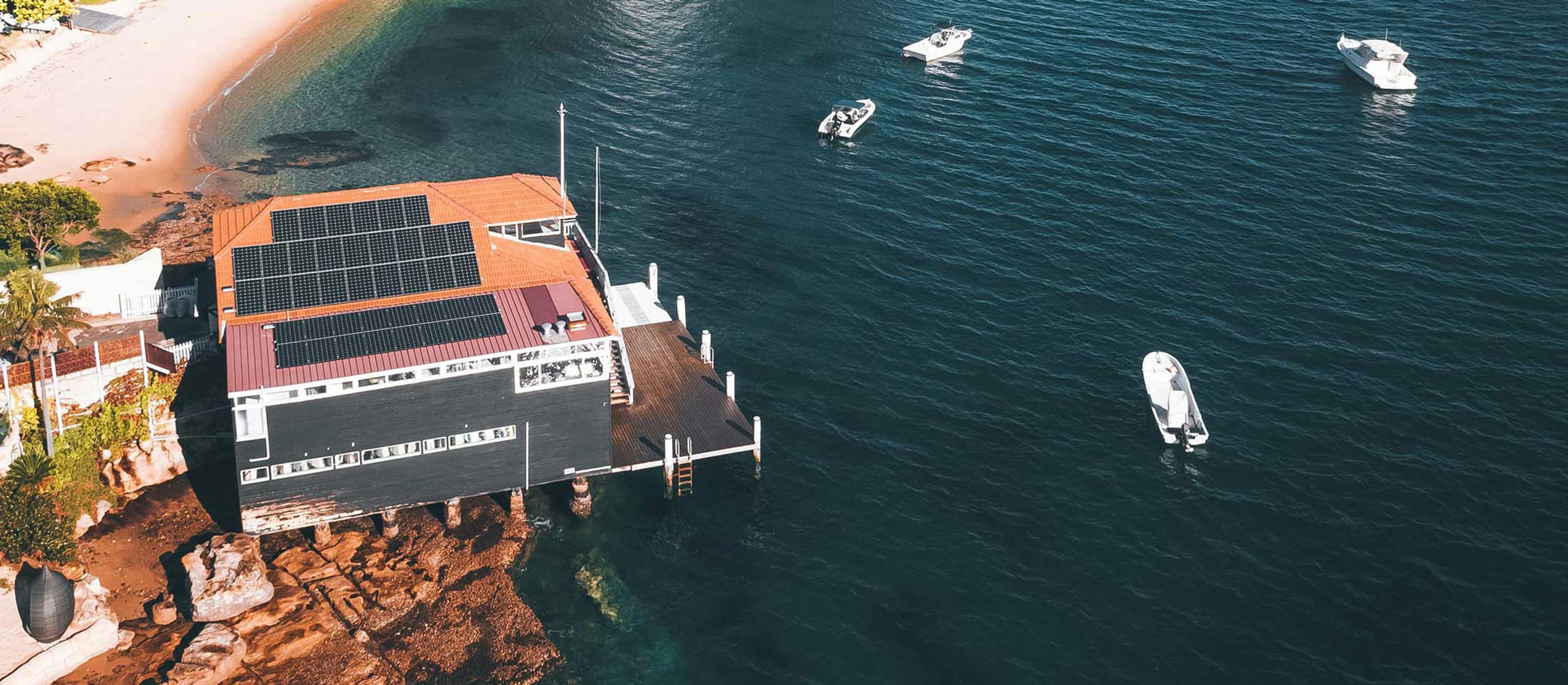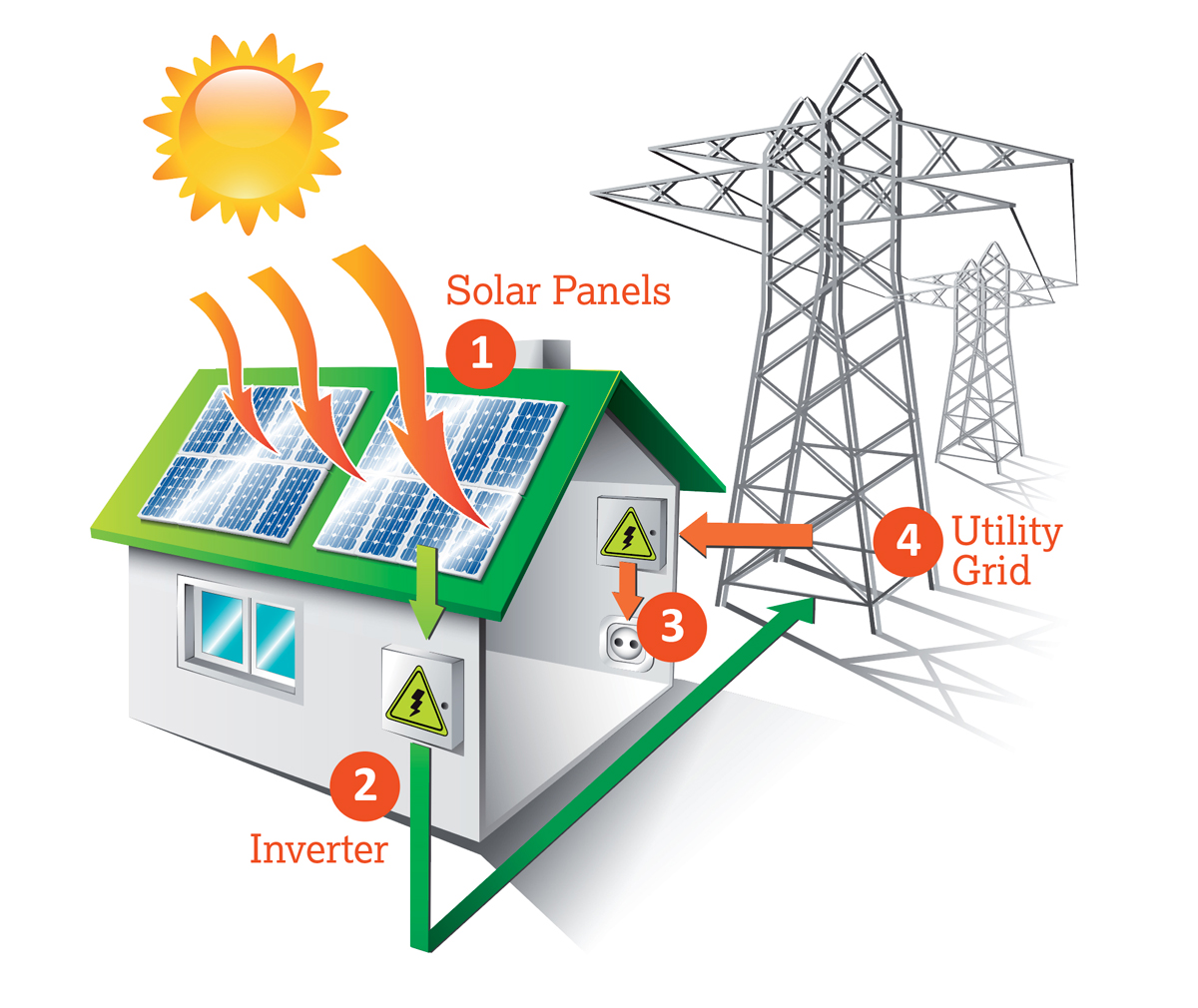The solar power system on your rooftop uses renewable energy from the sun to create clean green electricity to be used on-site.
Energy from sunlight is converted into direct current (DC) electricity via an array of solar panels. An inverter converts the direct current to alternating current (AC), the same as mains supply electricity, to feeds your school computers, lights and other equipment.
Using renewable energy helps avoid greenhouse gas emissions from traditional electricity sourced from coal-fired power, combatting climate change. Learn more with this video.

FAQs
How does solar power work?

- Energy from sunlight is converted into direct current (DC) electricity via an array of solar panels.
- An inverter converts the direct current to alternating current (AC), the same as mains supply electricity.
- The electrical panel then sends the power to feed your school computers, lights and other equipment.
- The utility meter measures the energy you draw and feedback to the supply grid. During the day when the sun is shining, some of the power being used is coming from the solar power system. If you’re consuming more energy than your system is producing extra power will come from the grid.
Why go solar?
Solar power is now more affordable than ever! Solar power prices have decreased by 80% over the last 10 years and the technology has evolved considerably since the first solar panel was invented.
Buildings belonging to community organisations are ideal sites to install medium to large-scale solar systems because they have large roof space, large daytime energy demand and ongoing tenure. Community organisations can use solar power directly to run their computer equipment, lighting, sports facilities, air conditioning and more.
Switching to solar energy helps reduce our local environmental impact, and helps your organisation cut energy expenses. Plus, it’s a great way to showcase your organisation as an environmental leader and inspire greater solar take-up across the region!
Why join in the program?
By joining our Solar my Suburb program your organisation will:
- Get free expert advice valued at over $6,000
- Save money on energy bills
- Access to cheaper green energy
- Reduce your organisations’ carbon footprint
- Demonstrate leadership to members, patrons and community
Plus, we know about all the government incentives and grants and have been successful in securing funding for a number of local clubs, so they get their solar systems for free or at greatly reduced costs.
Who runs the program?
Solar my Suburb is part of the 3-Council Regional Environment Program, a joint initiative of Randwick, Waverley and Woollahra councils. The program strongly supports the Councils’ mission to reduce carbon emissions across the region and enable the community to access renewable energy.
Who can join the program?
Any organisation providing community services within the Eastern Suburbs such as sport clubs, RSL clubs, bowling clubs, synagogues, hospitals, churches, charities and other community organisations with a ‘not for profit’ status. Community buildings where solar panels are to be installed must be located in the Eastern Suburbs of Sydney.
What costs are involved?
The support and facilitation program is free to you and run by Council!
Costs for a solar power system depend on the size of the system. Our free independent solar assessment report will provide you with this information.
Solar my Suburb helps your community organisation access grants and other available funding, which means your solar system could be free or a nominal cost to the school.
How long does the process take?
The entire process usually takes between 6-12 months.
Do we have to commit to installing solar?
There’s no commitment to installing solar if it doesn’t suit your organisation’s circumstances. In nearly all cases we can identify the right size and type of system to suit your needs.
What happens on cloudy days, weekends and holidays?
With grid connect solar systems, your organisation is still also connected to the mains power supply. So, any shortfall in electricity production on less-sunny days will come from your mains supply automatically. When the usage is low, the system will export the power back into the grid and earns money. Easy!
Is much maintenance involved?
There is little or no maintenance required and electronic components such as the inverter are totally maintenance free. We just recommend an annual check to ensure things are in working order. We have included 5 years of maintenance in our contract documentation that your organisation can use.
How can I get solar for my home or business?
You can also check CHOICE’S ‘Four steps to get Solar’ guide if looking at installing solar in your home or apartment building. It will answer all your solar questions, from right size for a system to types of panes to batteries and how to find a good solar installer.
If you live in an apartment in the Waverley area you can contact the Solar my Strata program. This free Waverley Council program is all about helping selected strata owners/buildings in the local area identify and implement rooftop solar solutions – to power individual units and/or common areas – by providing support from start to finish.
Woollahra Council offers 1-2 yearly information sessions on batteries and going solar. Their Apartment & Strata Energy Savings Program is a free Council initiative to assist strata buildings to reduce energy use resulting in potentially thousands of dollars of savings per year– in some instances this includes a solar feasibility study. You can also find more information on how to go solar on their website.
Randwick Council’s Sustainability Rebates program provides a rebate for installing solar on houses, units and businesses.
